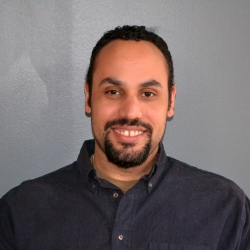Jun
5
2013

Written by Sean Thomas-Breitfeld
Although it’s popular to think of a select few individuals as “natural born leaders,” people actually learn how to lead. And much like the other elements of social capital, leadership is more likely to be developed or crushed depending on one’s location in our social hierarchy.
For me, my leadership developed through the church. It wasn’t just that I was raised by ordained ministers; my denomination had a range of ways to invest in young people’s leadership. On the informal end, pastors coached young people in leading public prayers and found opportunities to involve youth in Sunday services. On the more formal end, there were opportunities to be part of youth conferences and trainings, and youth seats on church councils and boards. The impact of all of these opportunities and supports – for me at least – was a level of comfort and confidence in public speaking, practice in organizing and persuading peers, and a sense that what I had to say mattered.
For other people, their sense of leadership and personal power might have been cultivated by their involvement in extracurricular programs. For those with more financial wealth, their leadership training might have been through Jack and Jill, equestrian sports, and Outward Bound. Or those with moderate incomes – but supportive and involved parents able to transport kids from activity to activity – might have been part of scouting programs, or baseball and soccer teams. But for people who are often on the losing end of race and class inequities, there are fewer supports in place to develop a sense of leadership and empowerment; so nonprofit organizations step in to fill the gap.
In the latest report in our series on 5% shifts, Developing the Leadership of Recipients, we profile two organizations that made small shifts to cultivate the leadership of their clients. The Rosa Parks Children and Youth Program in Detroit created a junior counselor program where teenagers supported younger children participating in the organization’s tutoring, summer camp and art therapy programs. Also, Bread for the City in Washington, DC supported the development of a Client Advisory Board to empower clients to have a voice in its programs. Both of these shifts developed the leadership capacity of program participants in very concrete skill-based ways. But they also sparked changes that are more qualitative.
When organizations treat clients as leaders, it often helps change recipients’ self-image and sense of agency. This shift also changes the organizations because the relationships between “professional” staff and program recipients become more about mutual respect as peers. When we think about organizations positioning themselves for broader social impact, we have to think beyond the functional leadership skills that can be developed. We have to value leadership capacity for its own sake.
